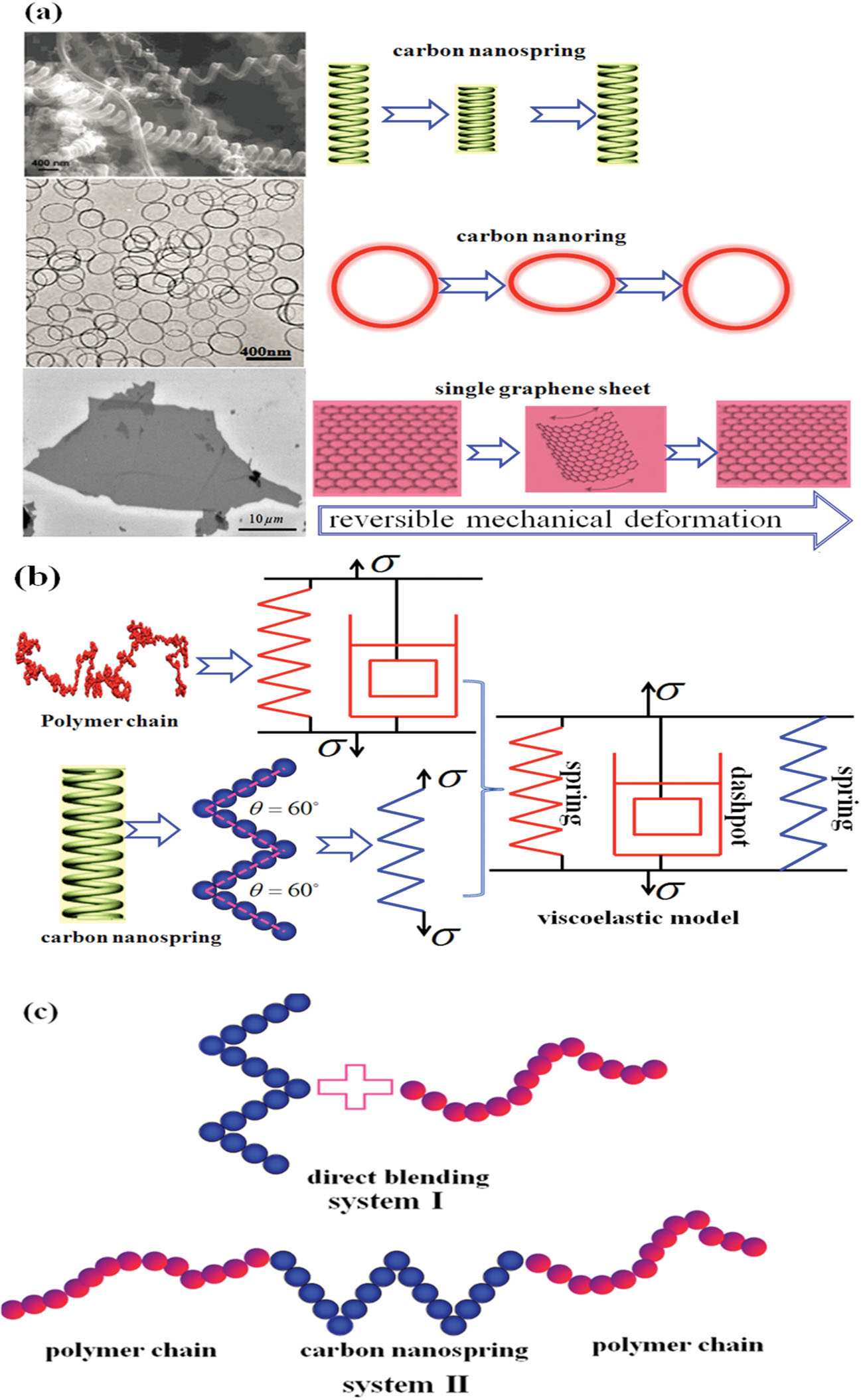编者按:此篇文章为我室刘军同学在Advanced Functional Materials发表的文章。介绍了我室在弹性体模拟方面的最新研究成果。
The Interesting Influence of Nanosprings on the Viscoelasticity of Elastomeric Polymer Materials: Simulation and Experiment
Among all carbon nanostructured materials, helical nanosprings or nanocoils have attracted particular interest as a result of their special mechanical behavior. Here, carbon nanosprings are used to adjust the viscoelasticity and reduce the resulting hysteresis loss (HL) of elastomeric polymer materials. Two types of nanospring-fi lled elastomer composites are constructed as follows: system I is obtained by directly blending polymer chains with nanosprings; system II is composed of the self-assembly of a tri-block structure such as chain-nanospring-chain. Coarse-grained molecular dynamics simulations show that the incorporation of nanosprings can improve the mechanical strength of the elastomer matrix through nanoreinforcement and considerably decrease the hysteresis loss. This fi nding is signifi cant for reducing fuel consumption and improving fuel effi ciency in the automobile tire industry. Furthermore, it is revealed that the spring constant of nanosprings and the interfacial chemical coupling between chains and nanosprings both play crucial roles in adjusting the viscoelasticity of elastomers. It is inferred that elastomer/carbon nanostructured materials with good fl exibility and reversible mechanical response (carbon nanosprings, nanocoils, nanorings, and thin graphene sheets) have both excellent mechanical and low HL properties; this may open a new avenue for fabrication of high performance automobile tires and facilitate the large-scale industrial application of these materials.

Schematics of the reversible mechanical deformation of a carbon nanospring, nanocoil, and graphene; the viscoelastic model of nanospring filled polymer chains; and two typical simulated systems.
文章索引地址:
Adv. Funct. Mater. 2012, DOI: 10.1002/adfm.201201438
